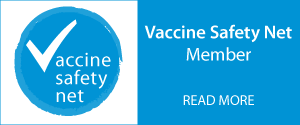Vaccine safety data can help build public confidence in vaccines by communicating that the benefits outweigh the risks of immunization. Through the COVID-19 Safety Studies project, researchers aimed to identify gaps in the regional availability of safety data for COVID-19 vaccines. The findings offer a step toward building vaccine safety surveillance capacity in low- and middle-income countries in preparation for the next pandemic.
The COVAX vaccine safety working group, the Coalition for Epidemic Preparedness Innovations (CEPI), and the WHO Pharmacovigilance team came together in 2021 with the shared goal of identifying and addressing safety issues and knowledge gaps in COVID-19 vaccine implementation. The group also engaged vaccine developers and the Developing Countries Vaccine Manufacturers Network (DCVMN). The group partnered with the International Vaccine Access Center (IVAC) at Johns Hopkins Bloomberg School of Public Health to develop and conduct the COVID-19 Safety Studies project.
When the project began, Parisa Shamaei Zadeh was completing her Master of Public Health at Johns Hopkins. “I was interested in vaccine hesitancy and how data contributes to confidence in the safety of vaccines,” she says. Under the leadership of Dr. Maria Knoll, Shamaei Zadeh joined the project, which informed her thesis. She worked with a team of researchers, which included Dr. Rebecca Chandler, Clinical Development Vaccine Safety Lead at CEPI, to conduct a landscape survey and literature review.

First, a landscape survey was distributed to individuals at institutions and in networks around the world, including universities evaluating COVID-19 vaccines, the WHO’s pharmacovigilance centers and technical advisory committees, networks of vaccine manufacturers and developers, and professional networks for pharmacoepidemiology and pharmacovigilance. Responses were collected from December 2021 to February 2022. Through the survey, the researchers sought to gather information on observational or low-interventional studies conducted after COVID-19 vaccines became available to the general population. As a next phase of the project, a literature review of vaccine safety studies for COVID-19 vaccines was conducted. The review included studies evaluating active vaccine safety surveillance or cohort monitoring studies of routine use of COVID-19 vaccines.
Using the data from the survey and literature review, the researchers created a database of COVID-19 vaccine safety studies in particular regions of the world and for any specific vaccines that were being used for COVID-19. Now, the data is displayed in publicly available and accessible visualizations on View-hub by IVAC, a map-based platform for visualizing data on vaccine use and impact.

From the visualizations, we can see the stark disparities in which vaccines are being studied. Hundreds of safety studies exist for vaccines developed in Europe and the U.S., such as the Pfizer and Moderna COVID-19 vaccines, while only a few studies were conducted for others, such as the Bharat vaccine developed in India and the Gamaleya vaccine developed in Russia.
Shamaei Zadeh found that seeing the data confirmed the inequities in the availability of safety data that her family experienced early in the pandemic in Iran, where the COVIran Barekat vaccine was developed. “A lot of my family members were trying to get the Pfizer vaccine because there was less safety information about the Iranian vaccine,” she says. At the time, mRNA vaccines had a headstart in collecting safety data. “This study is a stepping stone. We need detailed studies to create more robust evidence.”
Chandler sees potential for the study results to be used as an advocacy tool. “This study provides evidence that we need to invest in networks and platforms for generating active safety surveillance in preparation for the next pandemic,” she says. “It’s a step in the right direction.”
Shamaei Zadeh agrees, emphasizing the need to build capacity for vaccine safety surveillance. “If low- and middle-income countries are going to develop and introduce new vaccines, where is the capacity to collect safety data to build vaccine confidence among their populations?” she says.
Although the project has concluded, Chandler continues to follow new literature on cohort event monitoring from many of the countries represented in the initial landscape survey. Some of the survey responses brought to light studies that were planned but had not yet begun at the time and are now being published. “I think it’s important that capacity is sustained and we don’t lose it,” says Chandler. “We need to build upon this step that’s been taken.”
15 April 2024 Update: Access the published study in the journal, Vaccine: Landscape review of active vaccine safety surveillance activities for COVID-19 vaccines globally >
Written by Caroline Cassard



